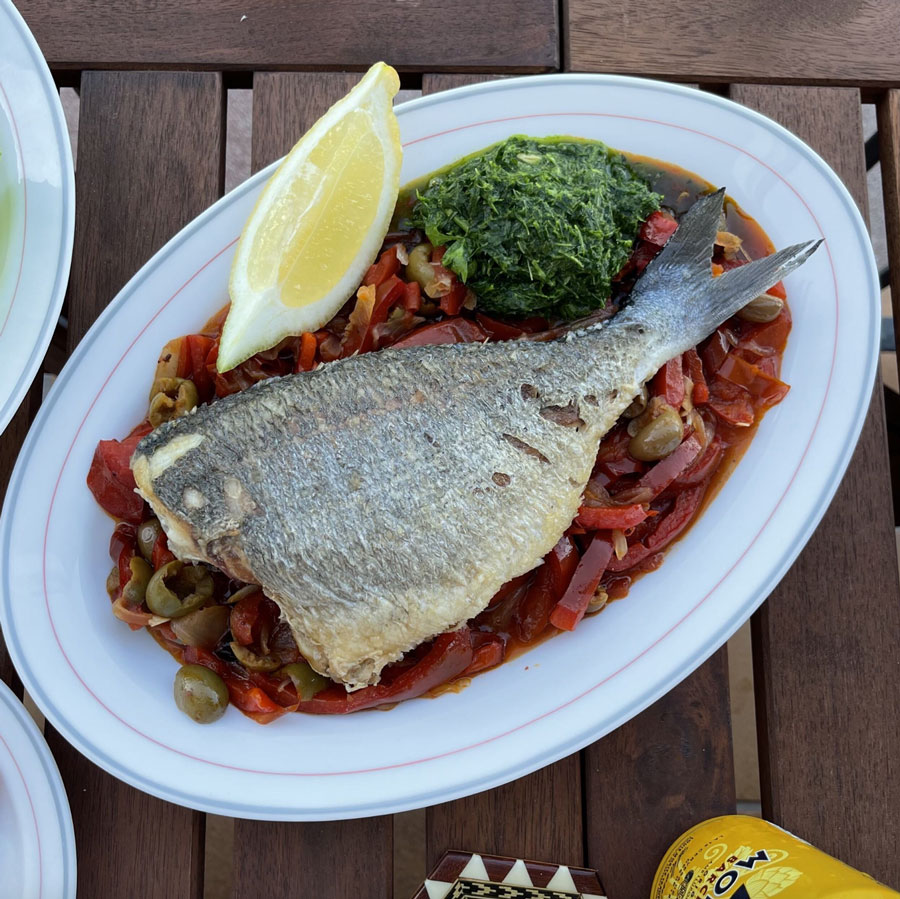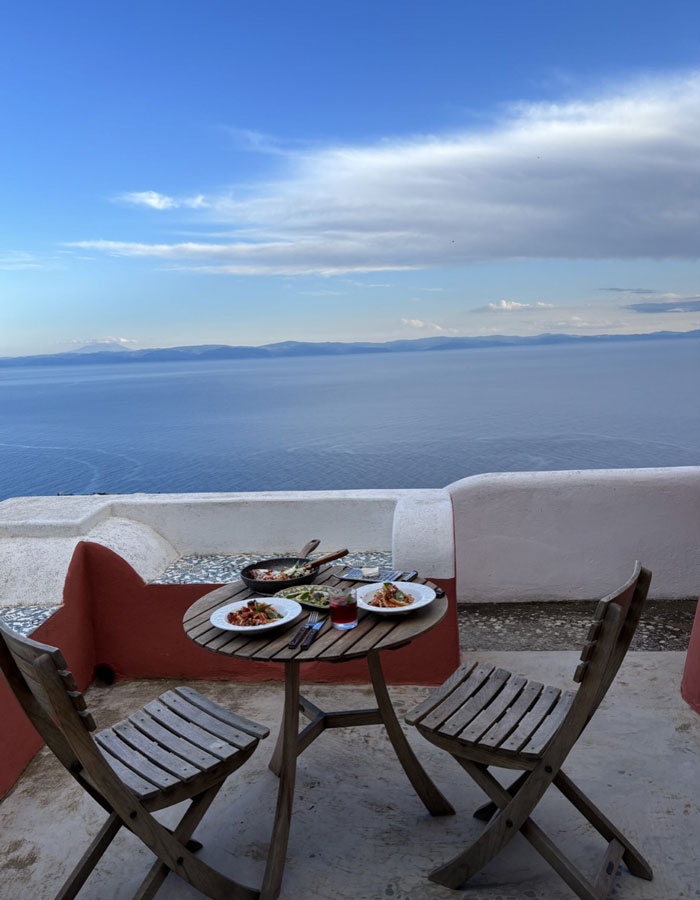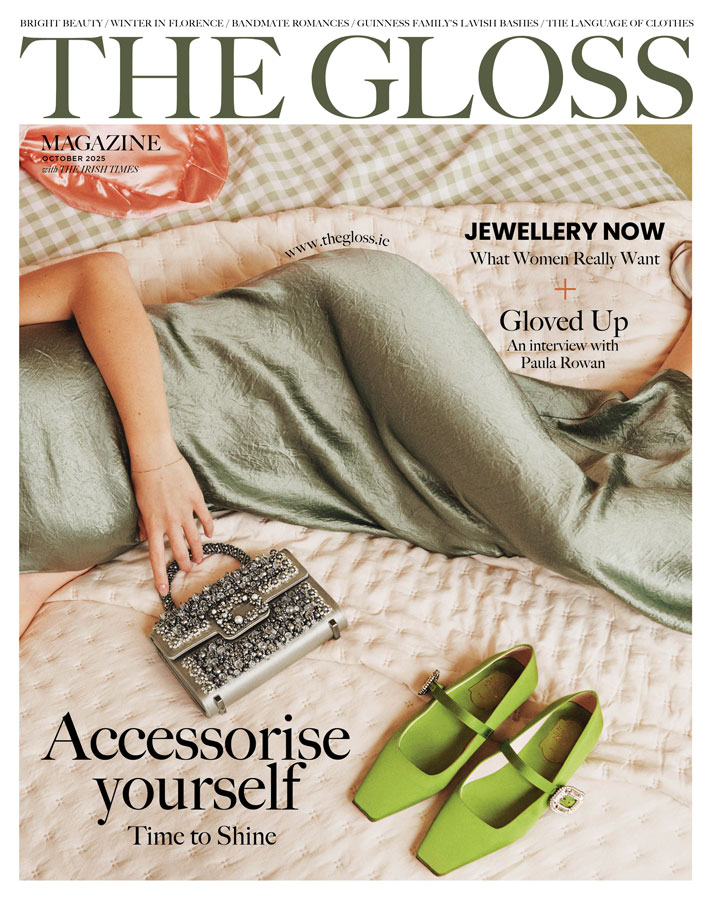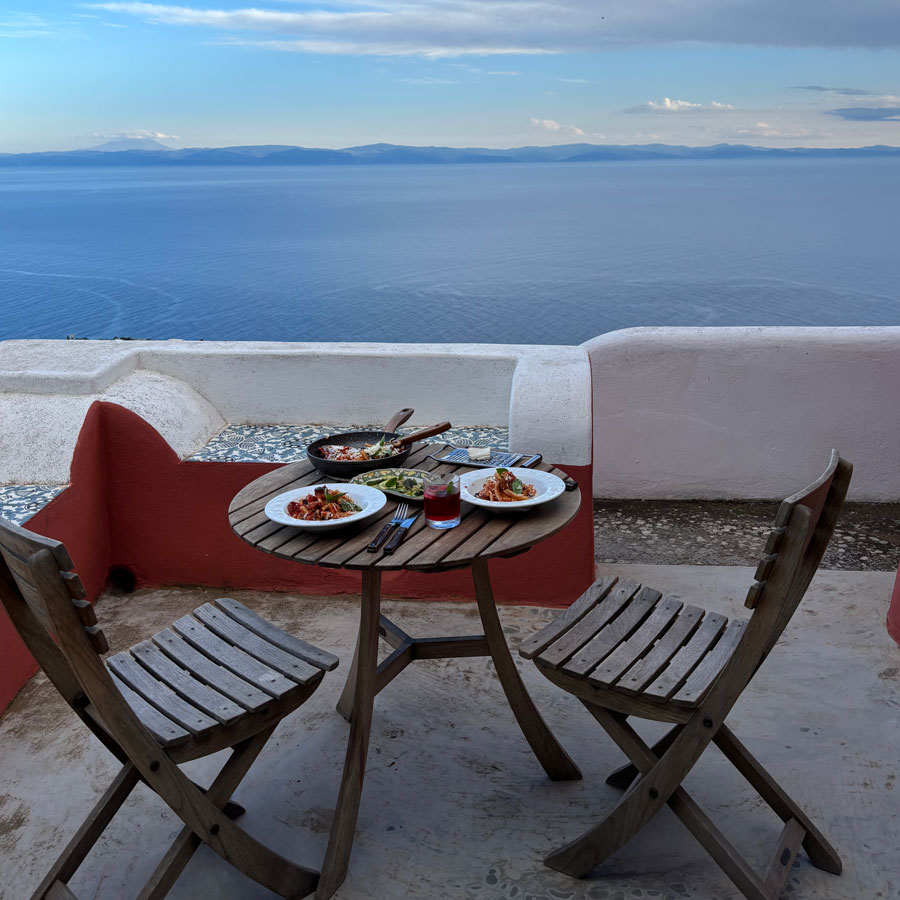Tips from my friends in food on how they navigate cooking abroad with limited utensils, which often turn out to be the most memorable meals …
There are a few reasons I prefer self-catered stays over hotels when travelling abroad. One is that I always end up wanting something simple like a salad after a few days of eating out at every meal, and the other is that I can’t resist a foreign supermarket. Spending an hour in the pasta aisles in Italy, browsing tinned fish in Spain or endless permutations of mustard in France makes me happy, much to the annoyance of the person traipsing around with me.
Over time, I’ve become a pro at cooking in holiday rentals. I’ve cooked in kitchens with barely functioning ovens, no chopping board and a single battered frying pan, but still had some memorable meals. It seems no matter where you go in the world, rentals have the most eclectic selection of kitchen tools – a chaotic mix of one butter knife, six garlic presses and a fondue set, but no colander or mixing bowl, leaving you to dress a salad in a saucepan and somehow drain the pasta without burning yourself. (All this seems manageable and even a bit magical when you are barefoot, refreshed by your latest swim, with a cold beer in hand.) So along with my beach towel, swimsuit and SPF, I have learned to pack a few kitchen essentials if I’m staying for a week: one good knife, a microplane grater, sea salt and a corkscrew/bottle opener to make things a little easier. (Top tip: Airbnb now has a dedicated search function for properties that include a “chef ’s kitchen” for those looking for something slightly more sophisticated.) @kittycoles
SEE MORE: 14 Unique Self-Catering Holiday Rentals At Home And Abroad

Tom Zahir Browne
Founder of Decatur, a London-based project dedicated to Louisiana cuisine, inspired by his time touring the American South, cooking in top New York restaurants, and a decade-long commitment to recreating the flavours and traditions of Southern food in the UK. @tomzahir
“I absolutely love cooking abroad. Wandering around a local market is often one of the great joys of any trip for me. Whether it’s plucking fresh chillies, fat, teardrop-shaped aubergines and wild oregano from the garden of an Airbnb in Sicily to cook pasta under the Mediterranean sun or trawling the shelves of Rouses in New Orleans for tubs of picked Louisiana jumbo crab meat, to season with Tony’s Hot Sauce and spoon over grits and eggs for breakfast – there’s a joy in the escapism of living a tiny vignette of a life somewhere new. I often find myself daydreaming about what my pantry might look like if these markets were where I did my weekly shop.
“One of my most memorable cooking abroad moments was boiling crawfish and blue crabs in a backyard in New Orleans’ West Bank a few years ago. We took a trip out to the Westwego Shrimp Lot to peruse the fresh lake-caught crabs and bayou-farmed crawfish. We slipped into the habits of the locals and it felt like a real connection to the state.”
Tom’s Top Tip: “If you’re staying in an Airbnb and want to cook but find the knives on offer aren’t up to scratch, look for a plate or mug with an unglazed bottom (where it sat in the kiln). This slightly abrasive surface can be used like a mini whetstone (sharpening tool) to hone the edge of a blunt knife. You can then “strop” the edge on the inside of a leather belt or even a rolled-up newspaper, which helps realign the bevel. You’re unlikely to impress Iron Chef Masaharu Morimoto with the results, but it’ll certainly help you tackle a few beautifully overripe tomatoes – ready to be sliced, salted, doused in vinegar and olive oil, and eaten in the sunshine.”

Milli Taylor
Author of When in Rome Substack (which I love). If you want THE best travel tips, especially what restaurants to go to, then this is the Substack to follow. @millitaylor
“First thing I do in a new city? Hit the food market. I like to get a feel for the locals, see what they’re eating, what’s in season, and what I need to order when eating out. The only heartbreak is not being able to take all that gorgeous produce home, so I always book accommodation with a kitchen and make sure to cook at least once.
“Back in the OG days of Airbnb, when you were just renting a room in someone’s house, I’d always check if I could use the kitchen. Honestly, those trips were the best. On my first solo trip to Brooklyn, I stayed with a chef who ran a Korean restaurant. She saw how much I loved cooking and she joked that I should do a day in her kitchen. I woke up to a note on the kitchen table with the address of her restaurant and spent the most memorable day learning from her team.
“Another time in Paris, I grabbed some beautiful plums at the market and just had to make a pie. I got back to my place, ready to bake, only to find there were no pie dishes, no scales, no rolling pin … nothing. So I improvised. I eyeballed the measurements, made the filling in a fruit bowl, rolled out the pastry with a wine bottle, and made a free-form galette. It actually turned out great, very rustic chic.”

Ben Lippett
London-based chef and food writer known for his relaxed cooking and recipes shared through his Substack, How I Cook. Pre-order his cookbook of the same name, which comes out in September – I can guarantee it will be great. @dinnerbyben
“A holiday is always ripe with potential for exploring good food, and it isn’t all found on plates in restaurants. Lean into local produce; if you’re in Europe, chances are you’ll be surrounded by sparkling vegetables, meat and fish. Airbnbs can offer a limited set up, but this forces creativity. Scoop up a lovely piece of fish, a handful of in-season vegetables, a loaf of bread and do as little as possible with them. Salt and lemon are your best friends. Just as that first cold beer on the balcony tastes that little bit better than back home, so will your cooking.
“Pictured above is a fish I cooked all the way in a pan, served with shop bought aioli, a sort of pepperade and a parsley sauce. It was a ripper meal made with one hob, a s***ty non-stick frying pan and a tiny saucepan.”

Tom Jackson
Author of Cool Pasta and creative and brand director of Twisted & Co. Find Tom’s Lemon Pesto Pasta Salad recipe below. @teeeeeejj
“Before I unpack anything at all, I’m in the kitchen taking stock. ‘They’ve got a moulin! We’ll have to make tomato sauce’, ‘Who in their right mind doesn’t own a grater?’ You can almost taste my wife’s disinterest from the other room. With holiday kitchen inventories, you win some, you lose some, and herein lies the romance of it all; you align your holiday cooking ambitions with the tools at your disposal – the culinary limitations always feel strangely liberating.
“One summer, we were staying on Procida, an island off Italy, for the lemons. Doped up on the volcanic minerals present in the island’s black sands, they grow to the size of melons, are sweeter, brighter-tasting, and have deep white piths known as the ‘bread’ of the lemon that eat like lemon-scented courgettes. The island produces its own brand of lemon pesto (pestolimò) which you can find on restaurant menus with pasta, grilled fish, with little fried crocché and so on. The lemon salad (that’s right) is a hyperlocal delicacy. I checked out the ingredients on the back of the pesto jar and set my sights on what would be the best beach-pasta experience of my life (so far anyway). The hand blender I’d found at the flat on arrival and had earmarked for making the pesto obviously turned out to be broken so I bought a new one from the little alimentari. I wonder if it’s been used since?” See Tom’s Lemon Pesto Pasta Salad recipe here.

Madeleine Woon and Katerina Van Camp
Australian writers based in Amsterdam (Kat is currently cooking on the Greek island of Kastellorizo for the summer). @madeleine.woon @kmvc
“Not much in life beats cooking in an outdoor kitchen – especially one with a view. One of the best we’ve had the pleasure of using was during our holiday to Alicudi, a small cone-shaped island in the Aeolian archipelago, last year. Aside from wild caper bushes, little else grows on the elemental island, and it’s not uncommon for the supermarket to sell out of fresh food. It’s a real lesson in the art of improvisation and making do with what you’ve got (which, luckily, includes flavourful produce ferried over from Sicily). When we weren’t dining at locals’ houses – a customary practice for visitors – we were in the kitchen making pastas, potato salads, and bean salads. Simple, but perfect.”
This summer, Kat is running the breakfasts at the boutique hotel Casa Mediterraneo on Kastellorizo, a tiny Greek island off the Turkish coast. She has the most beautiful outdoor kitchen at her disposal, with glimpses of the harbour flanked by neoclassical mansions and colourful timber fishing boats. The breakfast menu includes daily cakes, quiches, omelettes, eggs, spanakopita, fresh fruit, yoghurt, and local produce from across the Dodecanese. Madeleine is currently out there sampling her wares.





